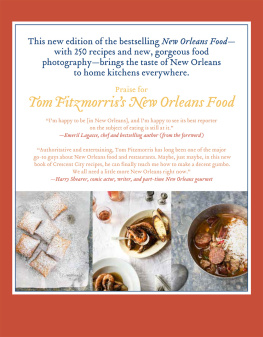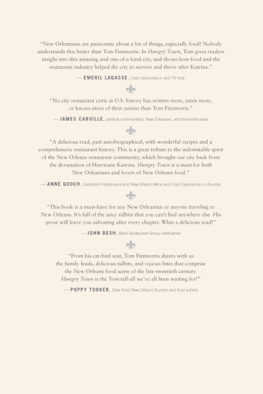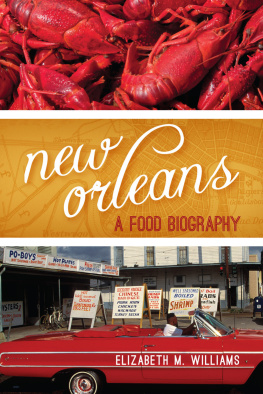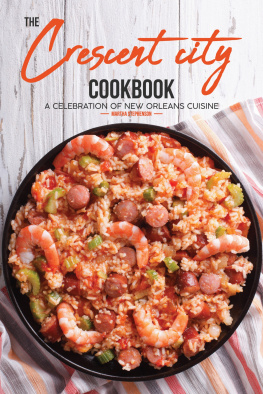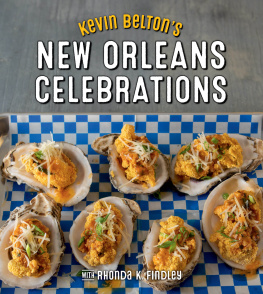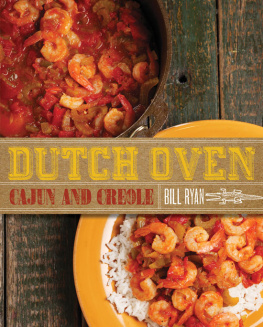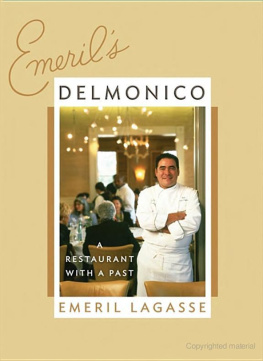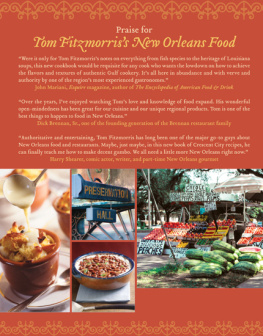

Editor: Holly Dolce
Designer: Danielle Young
Production Manager: Denise LaCongo
Library of Congress Control Number: 2017945114
ISBN: 978-1-4197-2981-2
eISBN: 978-1-68335-225-9
2010 Tom Fitzmorris
Photographs 2017 Rinne Allen
Cover 2017 Abrams
Published in 2017 by Abrams, an imprint of ABRAMS. All rights reserved. No portion of this book may be reproduced, stored in a retrieval system, or transmitted in any form or by any means, mechanical, electronic, photocopying, recording, or otherwise, without written permission from the publisher.
Abrams books are available at special discounts when purchased in quantity for premiums and promotions as well as fundraising or educational use. Special editions can also be created to specification. For details, contact specialsales@abramsbooks.com or the address below.

ABRAMS The Art of Books
195 Broadway,
New York, NY 10007
abramsbooks.com

Contents

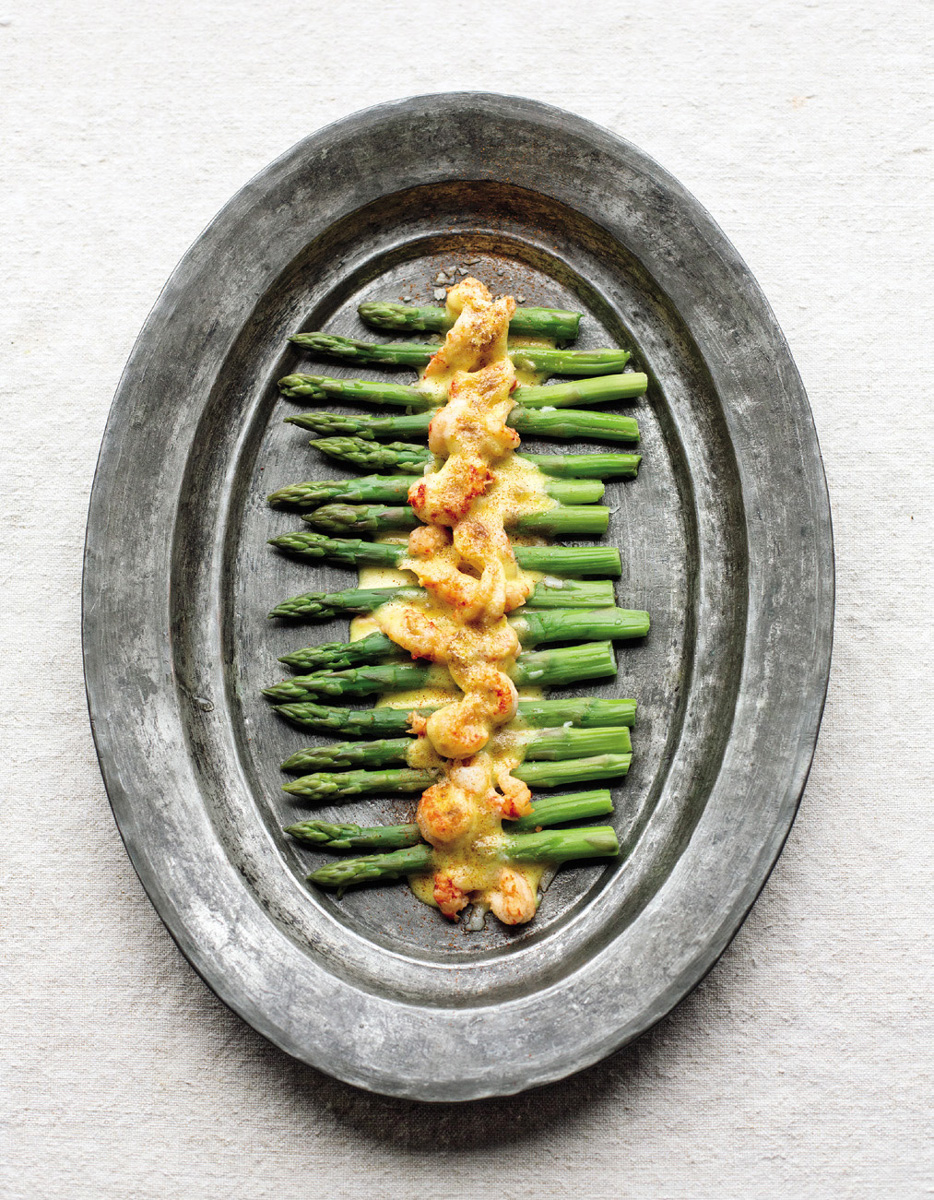
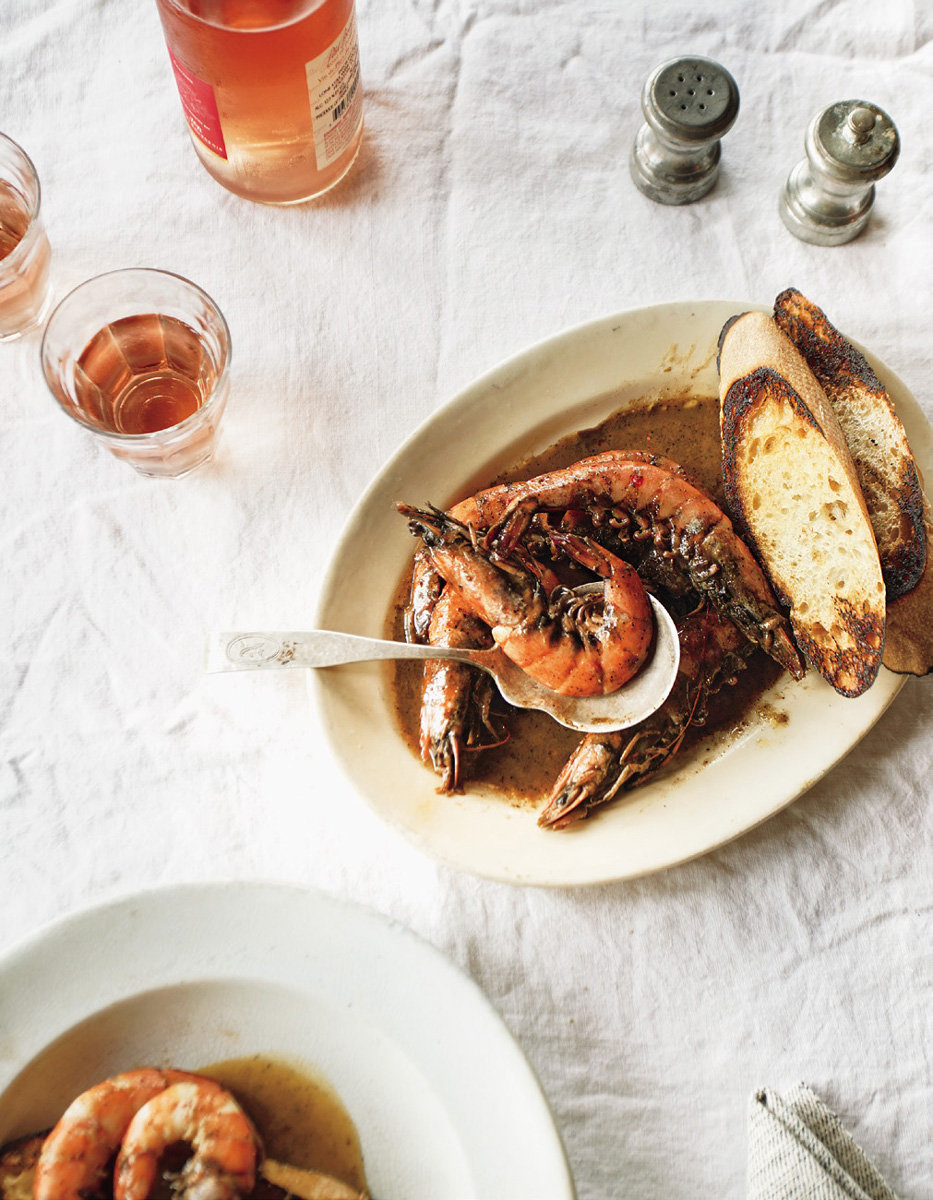
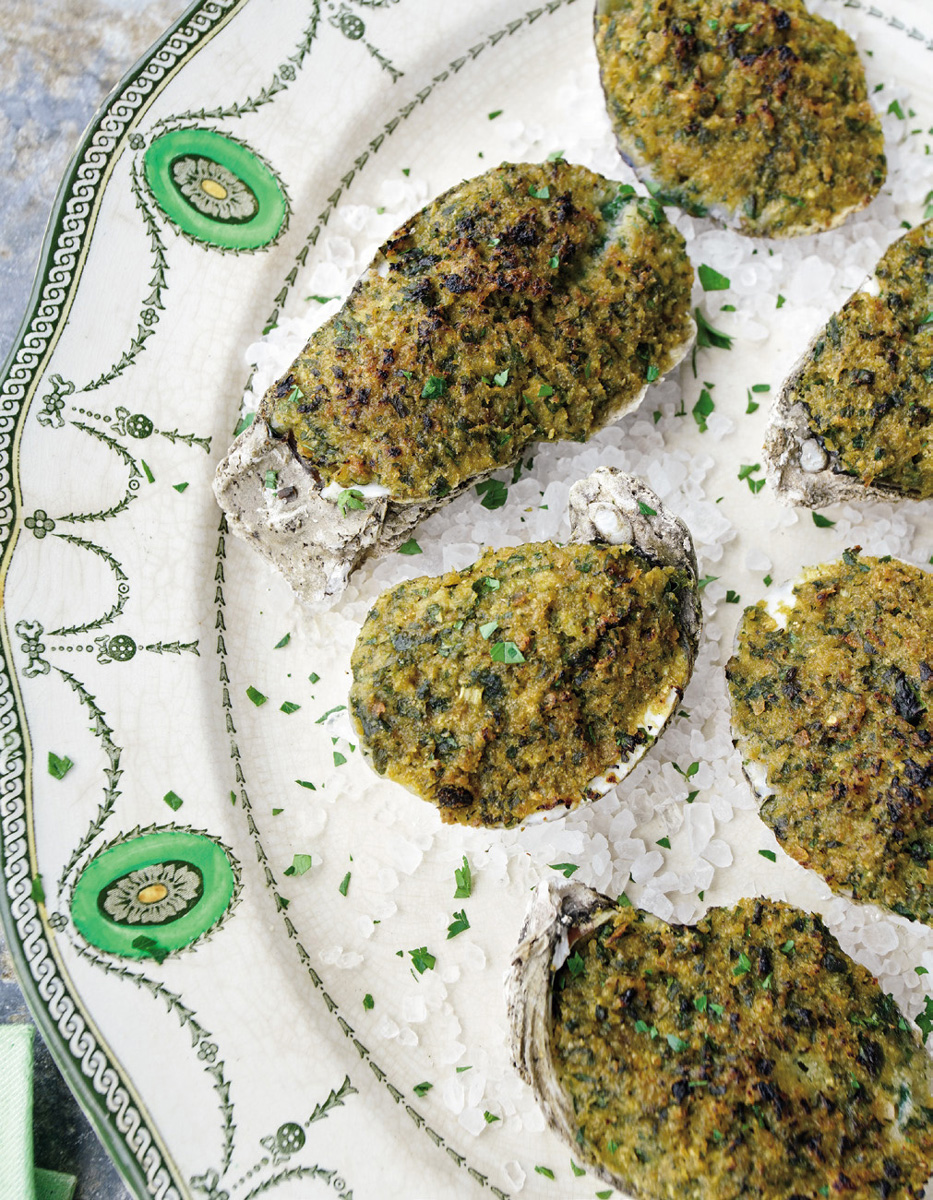
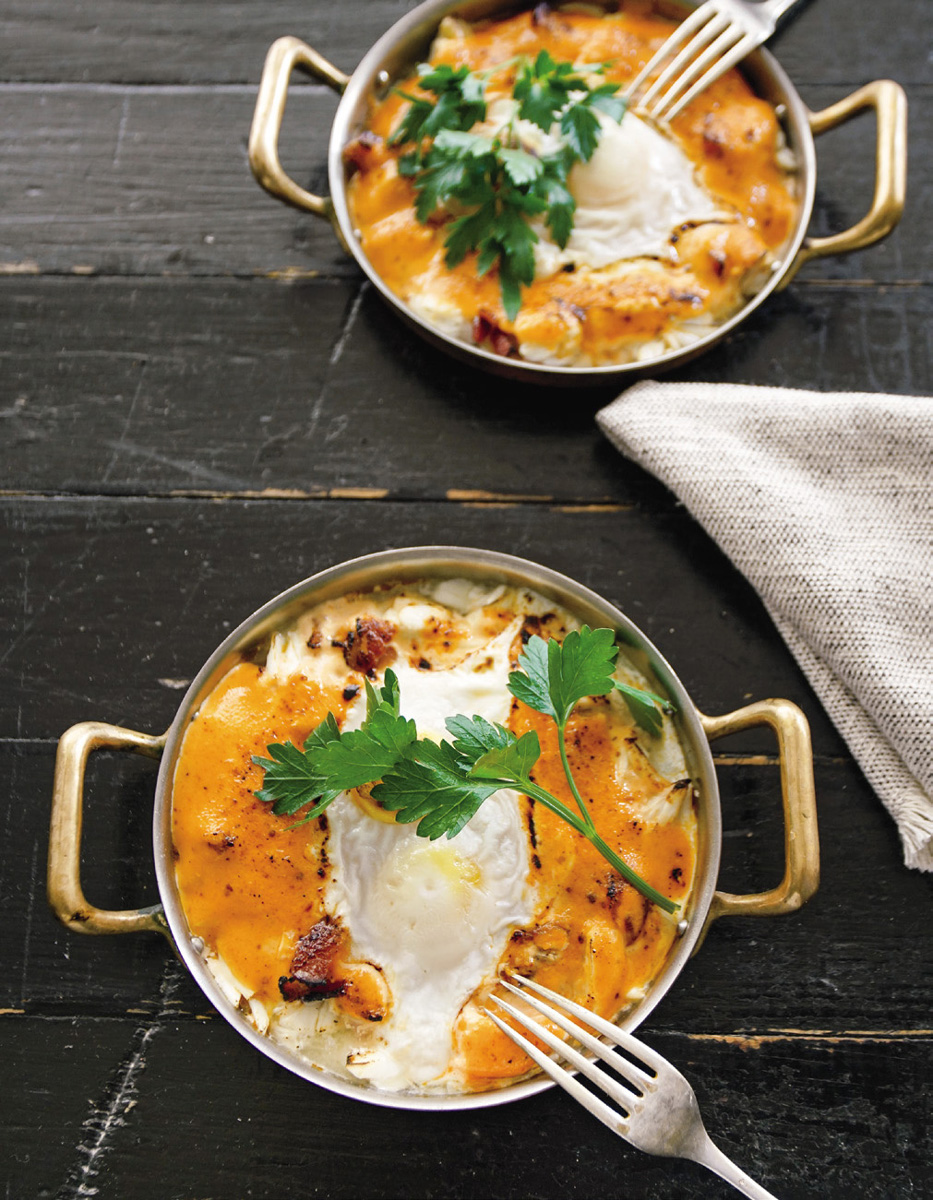
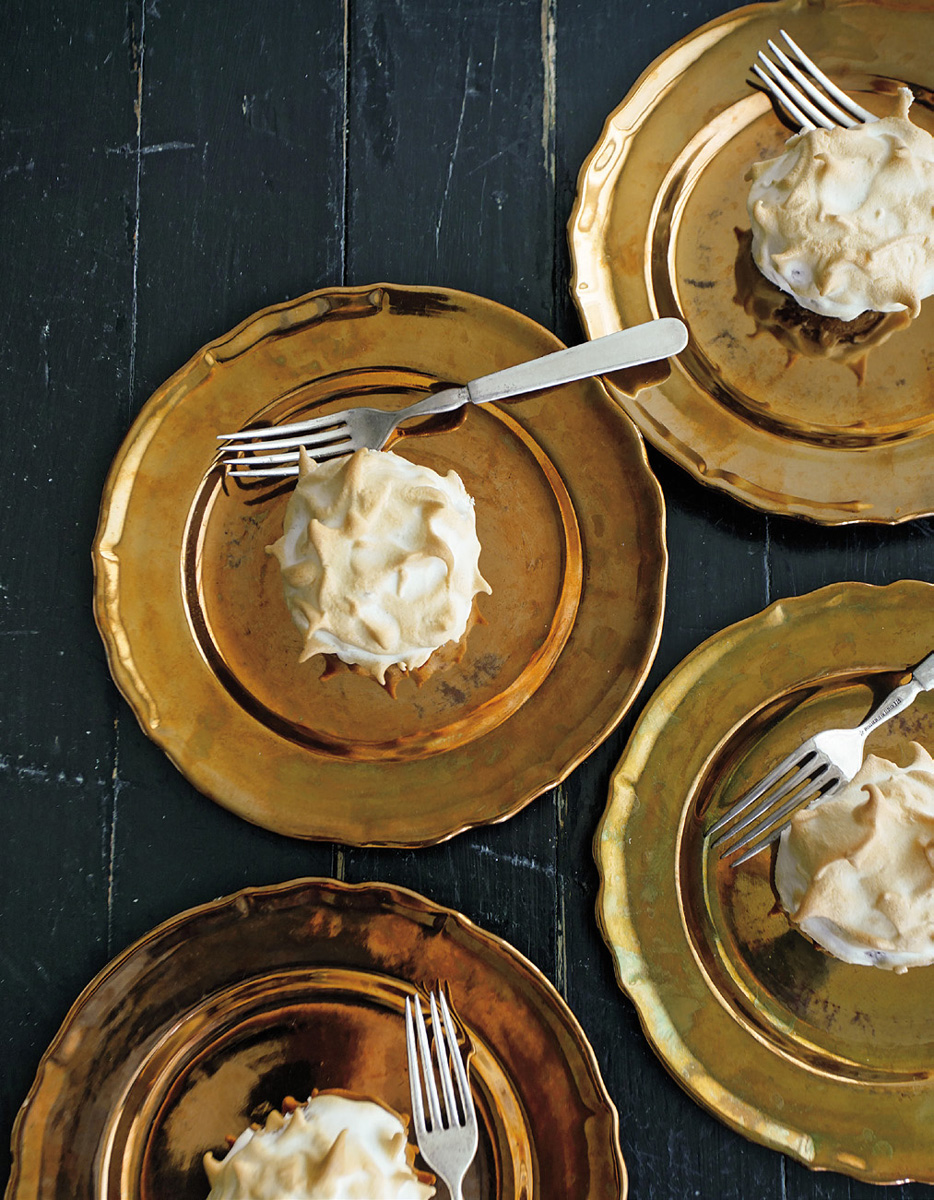
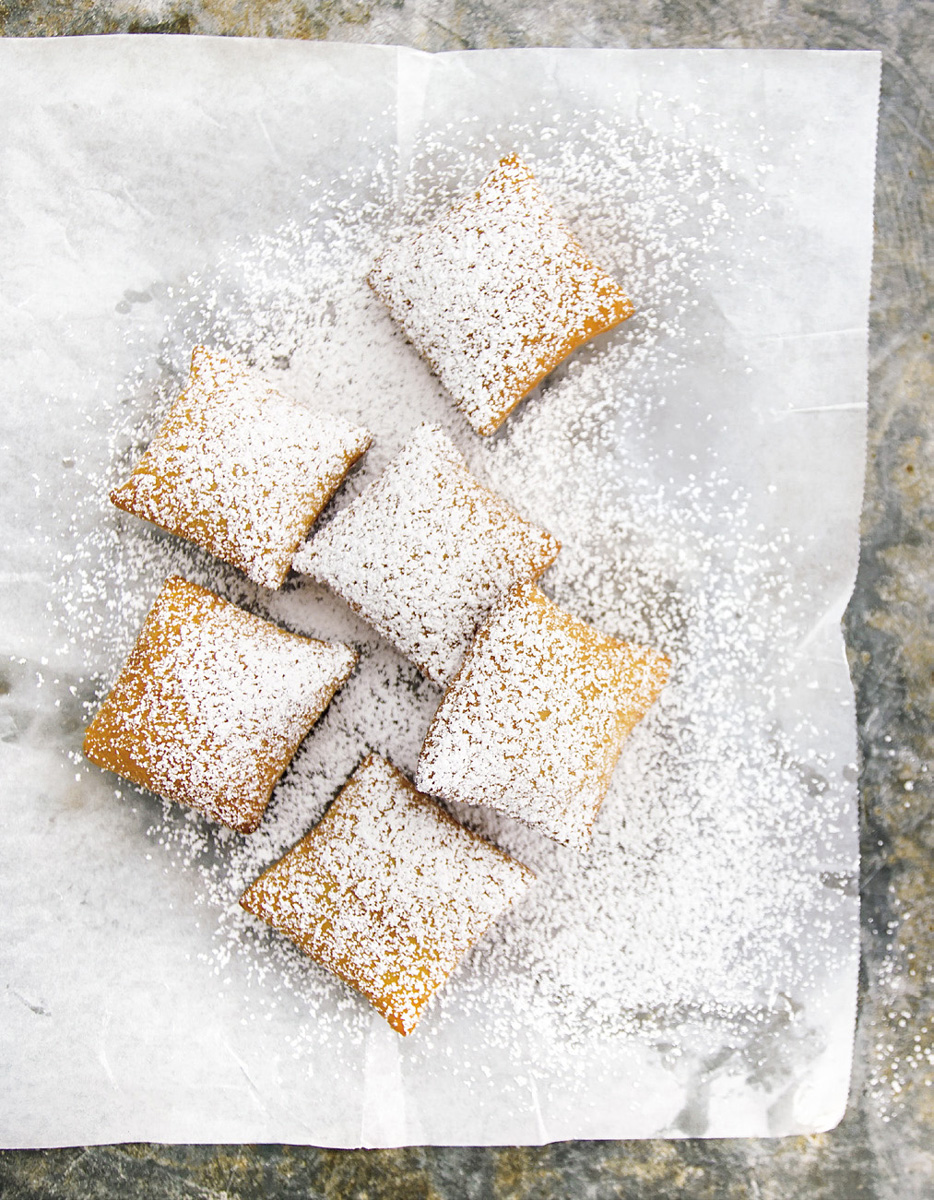

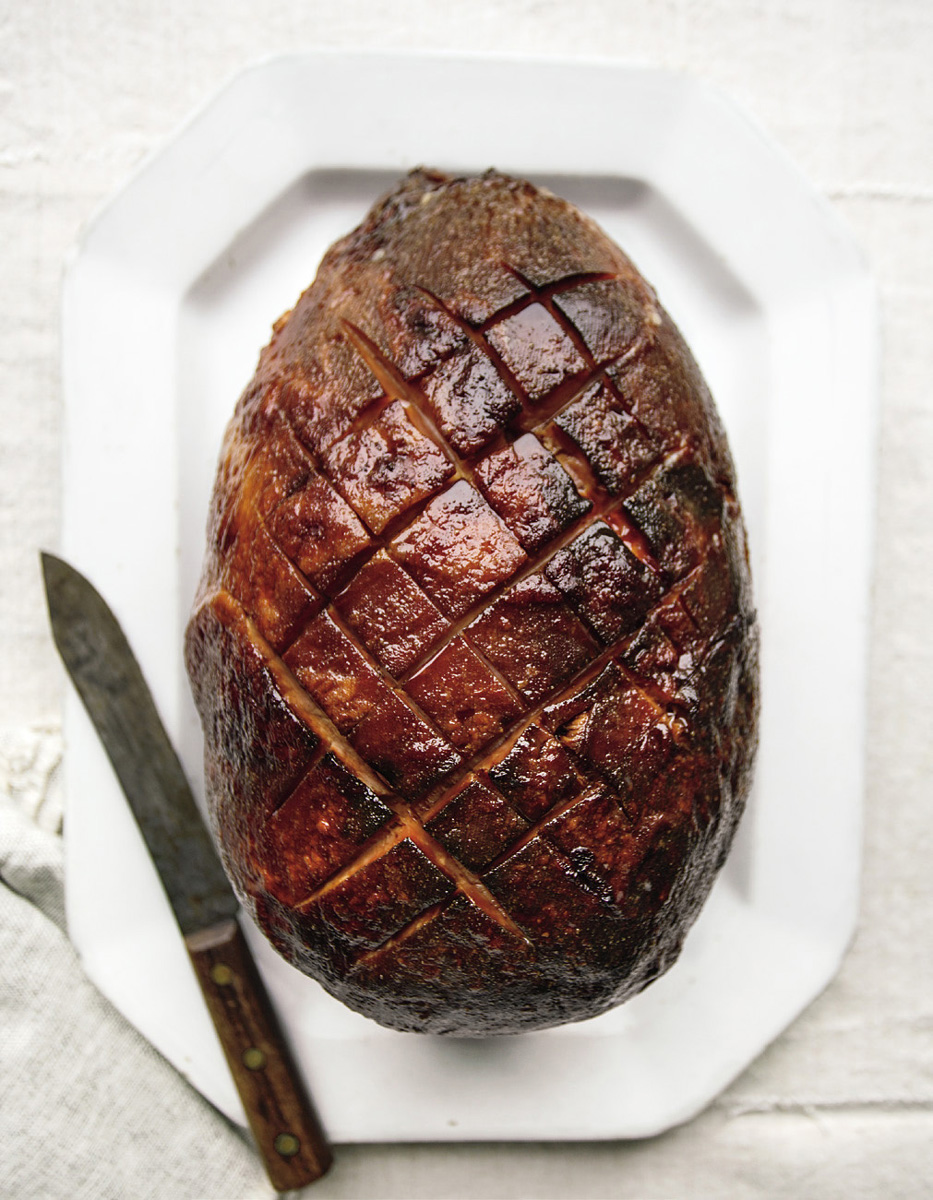

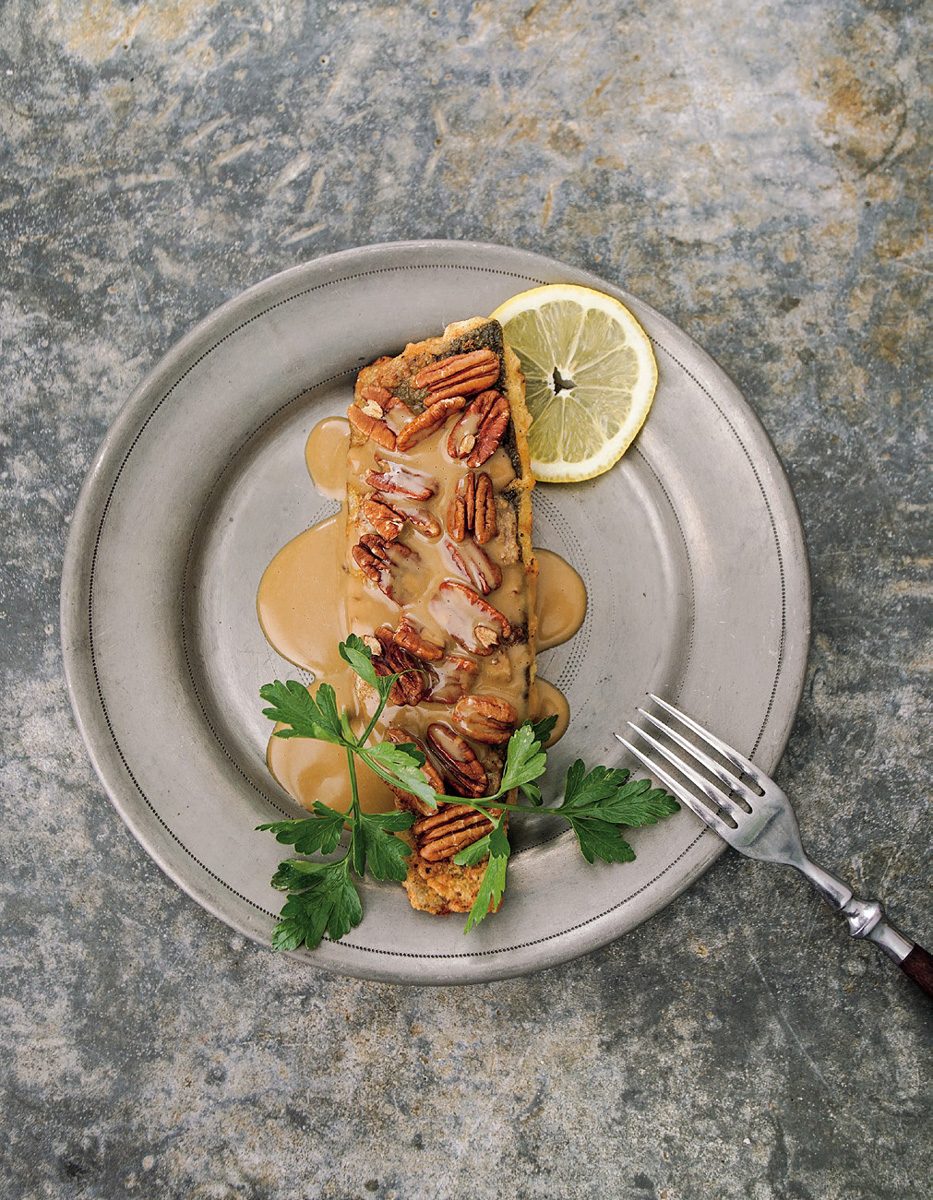
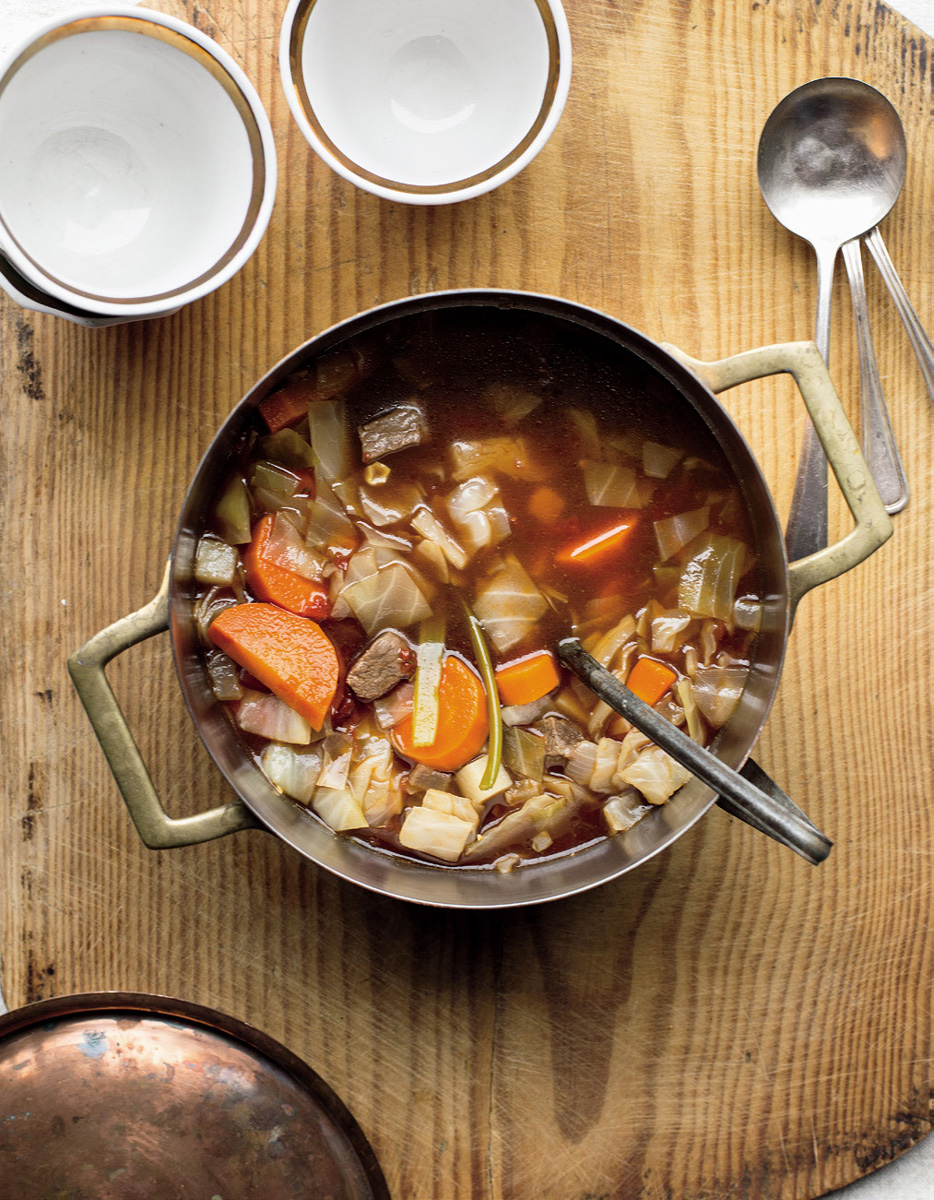

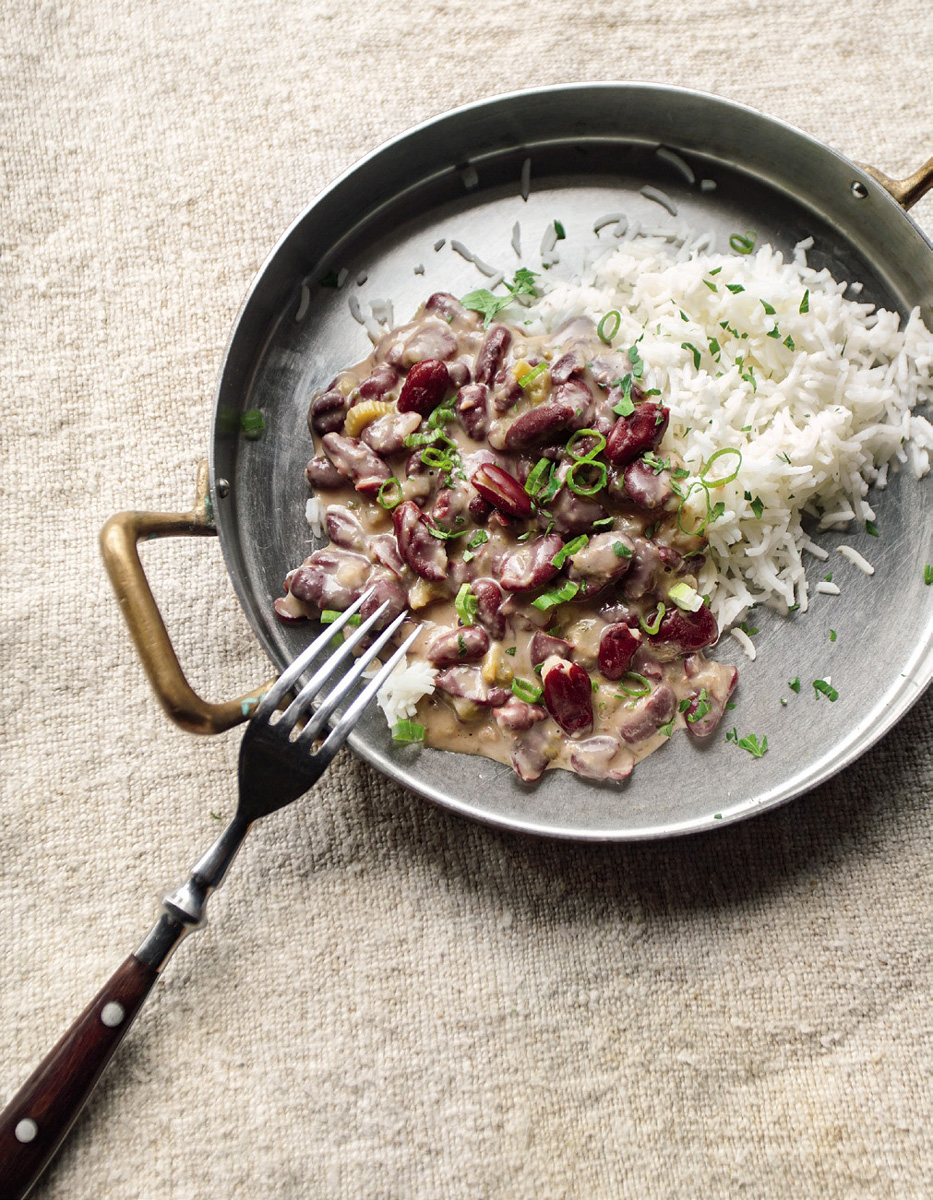


Authors Note
Food writing comes in three flavors. Restaurant critics look for peaks of enjoyment that can be had from eating and drinking. Cookbook writers are after formulas used to replicate what the critics found. Dieticians analyze foodstuffs and techniques to find those that maximize the eaters health.
Its peculiar that the three categories of endeavor only rarely overlap. But that is changing, for not the least of reasons that food writers refocus their quests as they get olderif they keep covering their beat at all.
I present myself as a rare bird. My food journalism began as dining criticism. Fifteen years later, when my wife and I got married and we had kids, I started writing cookbooks. Now Im trying to figure out how I managed to lose the seventy pounds my doctor demanded of me.
The funny thing is that Im still working in all three categories at the same time. The day I wrote these words, I also composed a recipe for my daily newsletter, a restaurant review for my radio show, and a piece about how portions are too big these days for an article in a monthly magazine.
Another oddity is that the same controversies that came up in, say, 1985 (a great year for New Orleans restaurants) are still being asked and answered. Yes, theres a difference between Cajun and Creole styles of cookingbut if it tastes good, it doesnt matter which one you decide to eat tonight, as long as the ingredients are fresh and local and you dont devour massive amounts of anything.
I bring up the everlasting Creole-versus-Cajun matter to set a stake in the ground for the recipes in this book. What I learned as a restaurant critic largely set my personal tastes. This is a book of my favorite recipes based as much on the dishes I enjoyed over the years, from the ones my Creole mother enthralled me with when I was a child to the ones I tried for the first time in one of the hot new bistros. Left out are the dishes I never cared for mucheven those that are considered classic New Orleans creations. Shrimp Creole, for example. Luckily, there arent many of those, and I try to keep an open mind.
Although you will read about many restaurants in these recipes, this is not a collection of restaurant dishes. The formulas used by restaurant chefs are rarely good for cooking at home. Some ingredients are hard to find. And while a restaurant might prepare a version of a dish for twenty-four people, a home cook is probably looking for a batch to feed four to six. This knife cuts the other way, too. Many restaurant dishes are made for one person, which would be impractical at home.
My inspiration for this cookbook comes from Richard Collin, known in the 1970s and 1980s as the New Orleans Underground Gourmet. He was one of the few food writers who shifted from covering restaurants to writing cookbooks. He wrote the first critical guides to New Orleans. A few years later, he and his wife Rima wrote a cookbook tuned to the restaurant food of the time. Their New Orleans Cookbook remains in print, along with a second cookbook about Gulf of Mexico seafood.
When I wrote this cookbook, the Collins cookbooks were still important. But they had become dated. A series of revolutions in the local restaurant world changed nearly everything about our local cookery.
My goal in writing this book was to catch up with the inventiveness among chefs from the mid-1980s onward. As proof that this process is still going on I offer the fact that this is the third edition of Tom Fitzmorriss New Orleans Food. Meanwhile, Im investigating how the citys food can be made more salubrious in the eating, while retaining its allure.
Foreword
O n the day before we officially opened Emerils in New Orleansmy first restaurantwe served dinner to a full house of friends. It was our dress rehearsal for the real thing. Tom Fitzmorris was there, with his wife and their one-year-old baby boy.
I first met Tom eight years before that. I was the new chef at Commanders Palace. He was the person you thought of when somebody said restaurant critic in New Orleans. Dick and Ella Brennan ran Commanders then and invited him to anything special we had going on. Eventually Dick started having dinners once a month with Tom and our mutual friend Marcelle Bienvenu.
Next page
